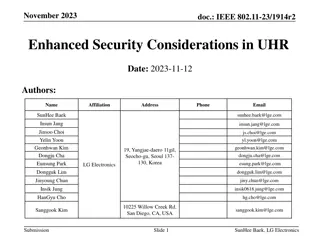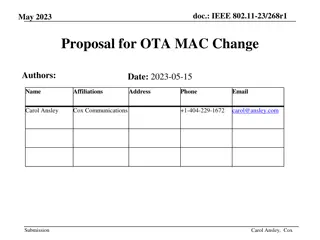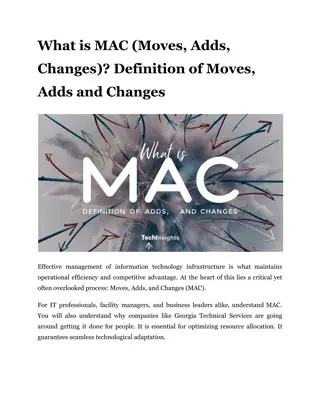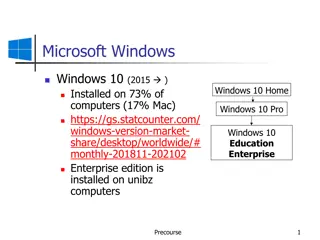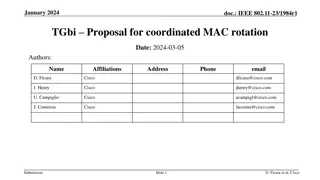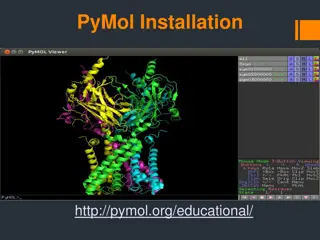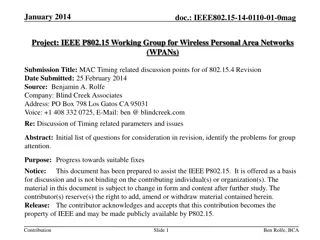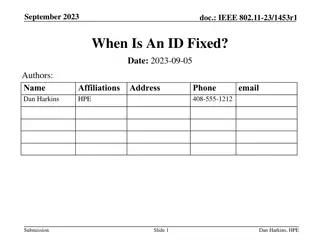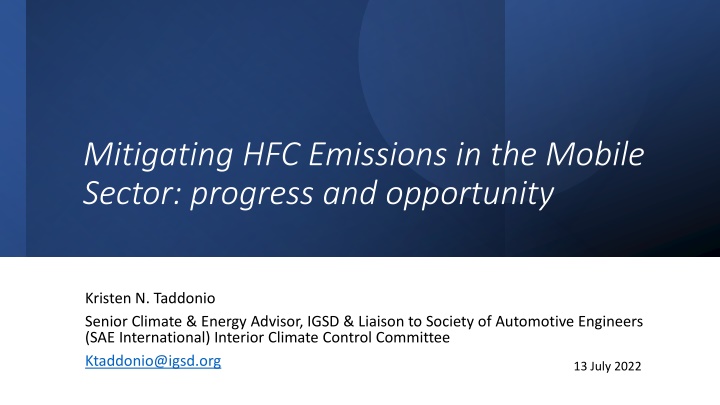
Mitigating HFC Emissions in the Mobile Sector: Progress and Opportunity
Learn about the progress and opportunities in mitigating HFC emissions in the mobile sector, focusing on the importance of transitioning to low-GWP options for mobile air conditioning systems. Discover cost-effective solutions, proven technologies like HFO-1234yf, and the impact on manufacturers and consumers. Explore key points, cost comparisons, and policies driving the shift towards environmentally friendly practices.
Download Presentation

Please find below an Image/Link to download the presentation.
The content on the website is provided AS IS for your information and personal use only. It may not be sold, licensed, or shared on other websites without obtaining consent from the author. If you encounter any issues during the download, it is possible that the publisher has removed the file from their server.
You are allowed to download the files provided on this website for personal or commercial use, subject to the condition that they are used lawfully. All files are the property of their respective owners.
The content on the website is provided AS IS for your information and personal use only. It may not be sold, licensed, or shared on other websites without obtaining consent from the author.
E N D
Presentation Transcript
Mitigating HFC Emissions in the Mobile Sector: progress and opportunity Kristen N. Taddonio Senior Climate & Energy Advisor, IGSD & Liaison to Society of Automotive Engineers (SAE International) Interior Climate Control Committee Ktaddonio@igsd.org 13 July 2022
Key Points: Mobile AC is low hanging fruit that can help parties achieve Kigali Amendment compliance. Efficient, low-GWP options for MAC are proven, available and affordable. They work in hot climates too. Non-A5 vehicle manufactures have already switched to low- GWP mobile AC, but may still ship cars using R-134a to A5 parties for cost savings. Replicating GWP<150 requirements can stop this. Cost to upgrade to low-GWP are typically borne by the manufacturers and does not significantly impact consumer price for new vehicles (cost is less than a single fill up of fuel). Efficiency rules and incentives for mobile AC can be implemented simultaneously with low-GWP mandates. This can save drivers a lot of money on fuel.
Proven, Available, and Emerging Options Hydrocarbons HFO blends Development HFC-152a (secondary loop) Demonstrated R744 (CO2) Commercialized HFO-1234yf Over 100 million vehicles sold since 2013 use it Proven Kristen N. Taddonio. (2021) Global Number of Vehicles Using HFO-1234yf Refrigerant. Institute for Governance & Sustainable Development, Washington DC and Paris. Timothy Craig, Stephen O. Andersen, Jiangping Chen, Sourav Chowdhury, Walter Ferraris, Jianxin Hu, Sangeet Kapoor, Carloandrea Malvicino, Prasanna V. Nagarhalli, Nancy Sherman, and Kristen Taddonio. (2020) Latest Options for Replacing HFC-134a Refrigerant in MACs. SAE Technical Paper 2020-01-1254, 2020, doi:10.4271/2020-01-1254.
Cost Comparison Price to manufacturers to switch to R-1234yf: Price of tank of fuel: (50 liters, 11 gallons) Price of new car: $20,000 to $40,000 $50 to $100 $20 to $40 ($0 if price of R-134a increases) Kristen N. Taddonio, Xiaopu Sun, Tad Ferris, and Dr. Stephen O. Andersen. (2021) Status of Patents and Legal Challenges: Patents Related to the Use of HFO-1234yf in Auto Air Conditioning. Institute for Governance & Sustainable Development, Washington DC and Paris.
Manufacturers making the switch!
HFO-1234yf GWP<150 Policies HFO-1234yf GWP<150 Policies HFC-134a No GWP<150 Policy (changing?) HFO-1234yf (GWP<150 Policy) + HFC-134a (No policy) Light Vehicle Sales. Source Credit: MSX Analysis. LMC Automotive, Global Light Vehicle Sales Forecast, Q1 2021; Frost & Sullivan; Roland Berger Automotive Disruption Radar online survey; LMC Automotive, Global Light Vehicle Sales Forecast, Q3 2019 and Q1 2021; Frost & Sullivan. APMEA = Asia Pacific Middle East and Africa. IGSD research and MACS Worldwide for 1234yf adoption .
Common Interventions Refrigerant Efficiency Leaks
https://theicct.org/wp-content/uploads/2021/06/ICCT_mobile-air-cond_CBE_201903.pdfhttps://theicct.org/wp-content/uploads/2021/06/ICCT_mobile-air-cond_CBE_201903.pdf
Recap: Mobile AC is low hanging fruit that can help parties achieve Kigali Amendment compliance. Efficient, low-GWP options for MAC are proven, available and affordable. They work in hot climates too. Most vehicle manufactures have already switched to low-GWP mobile AC, but may still ship cars using R-134a to A5 parties for cost savings. Replicating GWP<150 requirements can stop this. Cost to upgrade to low-GWP are typically borne by the manufacturers and does not significantly impact consumer price for new vehicles (cost is less than a single fill up of fuel). Efficiency rules and incentives for mobile AC can be implemented simultaneously with low-GWP mandates. This can save drivers a lot of money on fuel.
The expected concentrations of trifluoroacetic acid (TFA) from the degradation of HFO-1234yf (CF3CF=CH2) emit- ted now and in the future by India, China, and the Middle East were calculated using GEOS-Chem and WRF-Chem models. We conclude that, with the current knowledge of the effects of TFA on humans and ecosystems, the projected emissions through 2040 would not be detrimental. We carried out various tests and conclude that the model results are robust.


